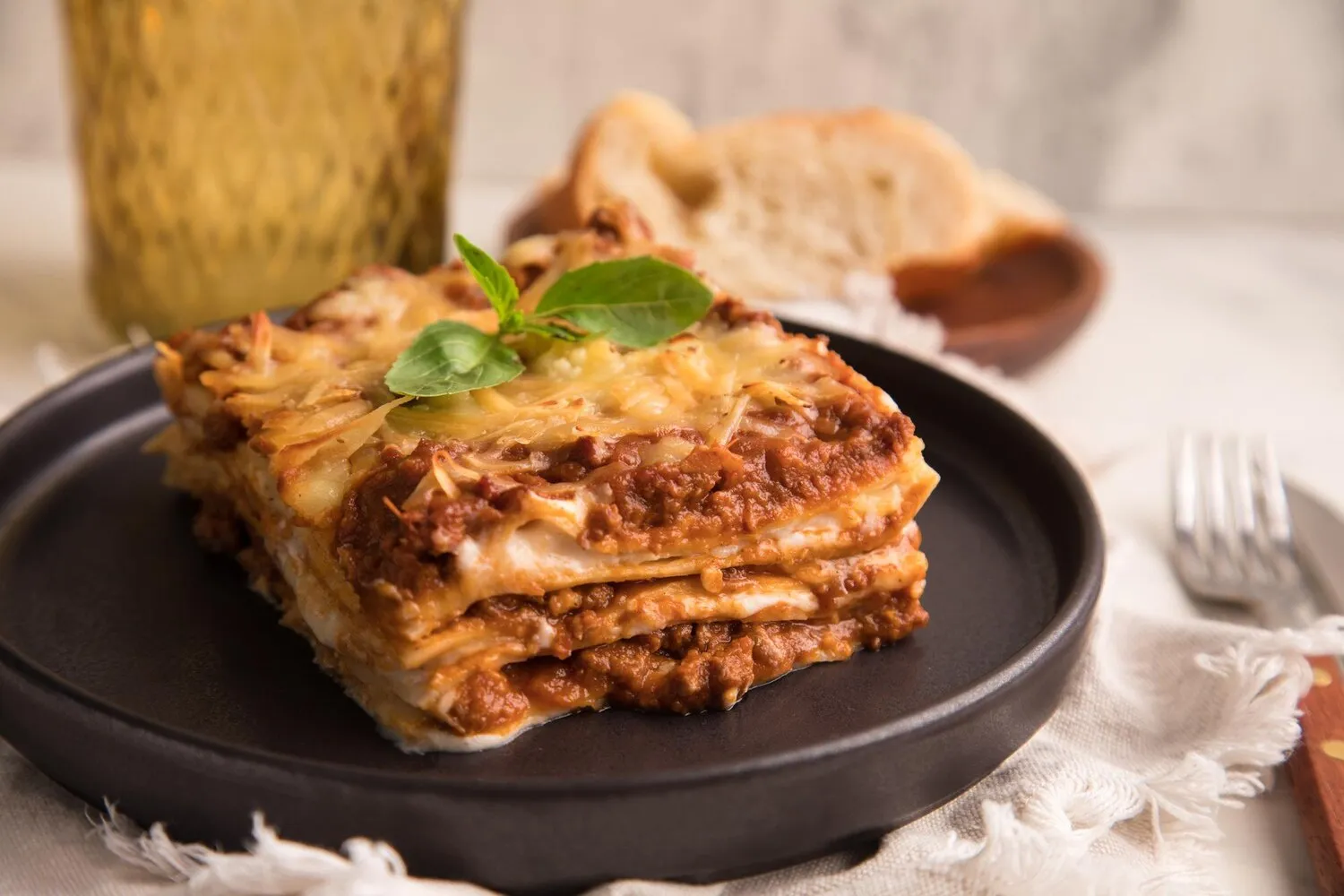
Lasanha Bolonhesa
Classic lasagna with Bolognese sauce.
Nutrition Facts
* The % Daily Value (DV) tells you how much a nutrient in a serving of food contributes to a daily diet. 2,000 calories a day is used for general nutrition advice.
MASSAS MOLHOS E CIA
Lasagna has ancient roots, likely originating in ancient Greece or Rome with dishes resembling flatbreads and layered pasta. The modern lasagna, particularly Lasagna Bolognese, evolved in the Emilia-Romagna region of Italy, specifically Bologna, and was refined over centuries with regional variations and the introduction of ingredients like tomatoes and béchamel sauce.
Lasagna Bolognese is more than just a dish; it's a symbol of Italian family gatherings, celebration, and culinary tradition.
Family Gatherings
Lasagna is often prepared for special occasions and family dinners, representing a shared meal and a symbol of togetherness. Making lasagna can be a collaborative effort, involving multiple family members in the preparation process.
Regional Variations
While Lasagna Bolognese is a classic, regional variations exist throughout Italy. Some regions may use different types of cheese, meats, or vegetables in their lasagna recipes.
Comfort Food
Lasagna is considered a comfort food in many cultures, evoking feelings of warmth, nostalgia, and home. Its rich and satisfying nature makes it a popular choice for celebratory meals and cozy nights in.
Lasanha Bolonhesa offers a rich and savory flavor profile, characterized by a harmonious blend of meat, tomato, cheese, and creamy sauce.
The primary flavor comes from the ragu alla Bolognese, a slow-cooked meat sauce typically made with ground beef, pork, or veal, along with pancetta, onions, carrots, celery, and tomatoes. This sauce is seasoned with herbs like oregano and bay leaf. Béchamel sauce, a creamy white sauce made with butter, flour, and milk, adds richness and smoothness. Parmesan cheese provides a sharp, salty, and nutty flavor, while the lasagna noodles contribute a subtle pasta taste. The baked layers meld together, creating a satisfying and complex flavor experience.
Ragu Consistency
Ensure the ragu is not too watery. Simmering it for a long time allows the flavors to meld and the sauce to thicken, preventing a soggy lasagna.
Béchamel Thickness
The béchamel sauce should be smooth and creamy, but not too thick. A medium consistency is ideal for layering and creating a cohesive dish. Avoid lumps by whisking constantly while cooking.
Noodle Preparation
Whether you use oven-ready noodles or pre-boil them slightly, be sure they are not overcooked. Overcooked noodles will become mushy during baking. Slightly undercooked pre-boiled noodles will finish cooking in the oven.
Layering Technique
Start and end with a layer of sauce to prevent the noodles from drying out. Distribute the ragu and béchamel evenly between the noodle layers for consistent flavor and texture.
Explore additional Italian dishes and restaurants
Explore ItalianDiscover top dining spots and culinary experiences in São Bento do Sul.
Explore São Bento do SulLearn more about the food culture, restaurant scene, and culinary heritage of Brazil.
Explore Brazil